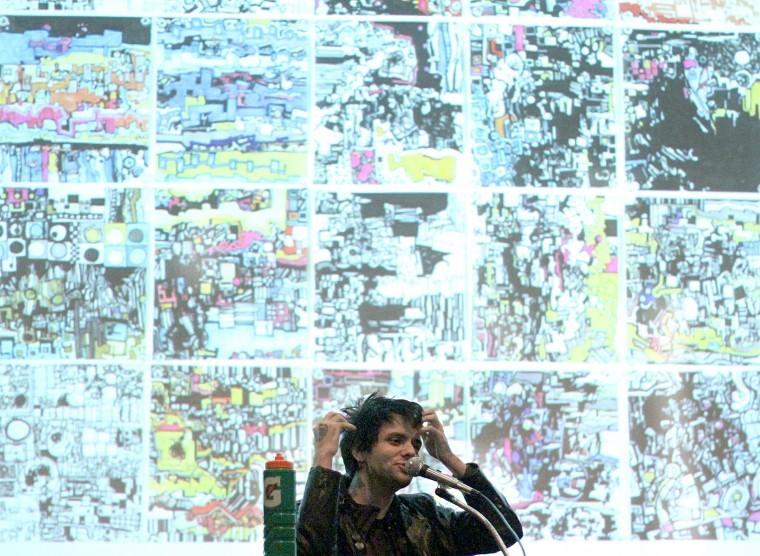Artist speaks on painting, porn and the female form
October 13, 2011
Artist Zak Smith, with his tattooed knuckles and perfectly mussed, black hair, stood at the podium looking nonchalantly rebellious as he delivered a relatable and compelling artist’s lecture Thursday night in the Jack Arends Building.
As Smith opened his lecture already eager to hear from his audience, many of the lecture’s attendees shared his cool demeanor as well as his very apparent love for visual expression. What many of his audience members may not share, however, is Smith’s other occupation as an adult film star.
“It’s a weird kind of famous,” Smith said when questioned by an audience member about being deemed by one source as the alternative adult film industry’s newest ‘It-Boy.’ But it didn’t appear that Smith’s porn star status had much effect on drawing Thursday night’s audience.
“We heard about it a few weeks ago,” said sophomore illustration major Lauren Gornik. “I don’t know a lot about the artist.”
His work presented included a painting titled “I Thought We Were Just Going to Listen to Records” in which a slender girl in pink boots is depicted locking lips with an octopus. The piece measures 69×111 inches and is part of a larger project, “100 Girls and 100 Octopuses,” which consists of 98 smaller pieces. Smith is also the creator of “Pictures Showing What Happens on Each Page of Thomas Pynchon’s Novel Gravity’s Rainbow,” a project that does exactly what the title claims and was included in the 2004 Whitney Biennial.
Smith said he draws his inspiration from mediums such as photography and sculpture more heavily than he does from painting itself. In viewing his work, it is easy to see how the abstract world of paint collides with the concrete worlds of sculpture and photography. Smith truly creates a visual world in which fictional and nonfictional renderings are, as he described in his lecture, “arranged in the same visual language.”
“I’m interested in the degree to which things are real or not,” said Smith of his affinity for painting weird, collage-like portraits of people in their natural environments – their bedrooms, offices or studios.
Look at Smith’s portraits (or at the subjects of almost any of his other work), and you’ll notice they’re mostly females. When questioned about his abundant use of the female form, Smith had an easy answer: “It’s better.”
Smith went on to add that to be able to really create something, artists must choose subjects that they can easily become wrapped up in. The best things to put in your painting, said Smith, are only the things that you find interesting to look at yourself.
“If you’re not interested in painting something, take it out of your picture,” Smith said.



